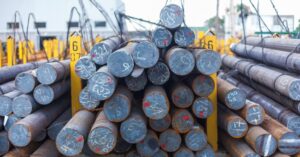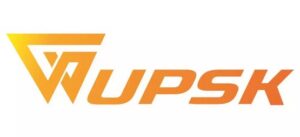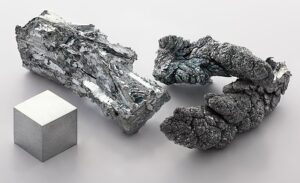
In January-September this year, Ukraine increased exports of carbon steel semi-finished products in physical terms by 65.5% year-on-year to 1 million 529.919 thousand tons. According to statistics released by the State Customs Service (SCS) on Tuesday, exports of carbon steel semi-finished products increased by 59.1% to $758.627 million in monetary terms.
The main exports were to Bulgaria (31.05% of supplies in monetary terms), Egypt (20.80%) and Turkey (10.08%).
In January-September 2024, Ukraine imported 5 tons of semi-finished products from Egypt for $5 thousand, while in January-September 2023, it imported 92 tons of semi-finished products from China for $169 thousand.
As reported, in 2023, Ukraine decreased exports of carbon steel semi-finished products in physical terms by 36.7% compared to 2022, to 1 million 203.454 thousand tons, while exports in monetary terms decreased by 48.9% to $608.516 million. The main exports were made to Bulgaria (36.66% of supplies in monetary terms), Poland (23.01%), and Italy (9.60%).
In addition, in 2023, Ukraine imported 96 tons of semi-finished products from China (98.26%) and Turkey (1.74%) for $172 thousand.

Ukraine’s victory plan consists of five points and three secret annexes, President Volodymyr Zelenskyy has said.
“Point one is geopolitical. Points two and three are military. Point four is economic. Point five of the Victory Plan is security,” Zelenskyy said during the presentation of the Victory Plan to MPs and the Ukrainian community in the Verkhovna Rada.
He reminded that the points of the Victory Plan are timed. The President explained that “the first four are the time of the war to end it.” The fifth point of the Plan is for the time after the war to ensure security.
“If Ukraine does not strengthen now, Russia will strengthen next year. And we have to be honest – Ukrainians and all our partners – that if we do not strengthen now, Putin will have time to strengthen next year in a way that will put diplomacy on hold forever. Russia must lose the war against Ukraine. And this is not a “freeze”.
“We have to implement the Victory Plan to make Russia attend the Peace Summit and be ready to end the war,” the president said.
The Plan consists of five points and three secret annexes.
The first point was to invite Ukraine to join NATO “right now.” According to Zelenskyy, Ukraine’s determination on the NATO issue means the inevitability of European integration.
The second point is “Defense”. It includes: operations on the territory of the Russian Federation to prevent buffer zones on the territory of Ukraine; assistance from partners in manning reserve brigades for the Armed Forces; joint defense operations with European neighbors in Europe to shoot down Russian missiles and drones; lifting restrictions on the use of long-range weapons.
Point three is deterring Russian aggression. It also has a secret annex to which the leaders of the United States, Britain, and Italy have access. Ukraine offers to host a comprehensive non-nuclear package to deter further Russian aggression.
The fourth point is Ukraine’s strategic and economic potential. There is also a secret annex that is being handed over to the US and EU. It provides for an agreement with partners.
The fifth point is designed for the postwar period. Ukrainian experience should be used for the entire Alliance and the defense of Europe. Kyiv proposes replacing the US military in Europe with Ukrainian troops after the war.
The second, third and fourth points have secret annexes that were presented to the partners.

In January-September this year, Ukrainian enterprises increased imports of tin and tin products by 1.7% to $2.086 million ($244 thousand in September). Exports of tin and tin products amounted to $346 thousand (in September – $2 thousand) against $57 thousand in the same period a year earlier.
As reported, in 2023, Ukraine reduced imports of tin and tin products by 23% to $2.728 million. Exports of tin and tin products in 2023 amounted to $159 thousand, compared to $424 thousand in 2022.
Tin is used mainly as a safe, non-toxic, corrosion-resistant coating in its pure form or in alloys with other metals. The main industrial applications of tin are in white tinplate (tinned iron) for food containers, in solders for electronics, in house pipelines, in bearing alloys, and in coatings made of tin and its alloys. The most important tin alloy is bronze (with copper).

Ukraine has a new breed of trotting horses created by breeders on the basis of a population of domestic trotting horses crossed with American Standardbred and French trotting breeds, said Vitaliy Koval, Minister of Agrarian Policy and Food.
“It (the breed – IF-U) was approved by the expert commission of the Ministry of Agrarian Policy. This is a new breeding achievement in animal husbandry, as the work on creating a lynx breed has been carried out for 30 years. (…) They also paid attention to liveliness, distance, and external characteristics,” he wrote in a telegram.
According to Koval, the Ukrainian trotting breed differs from other trotting breeds in terms of a set of traits and geographic location, breeding methods, and genetic markers.
“Our horses are characterized by a dry, strong constitution, with a harmonious build and a distinct harness type. Their temperament is energetic and gentle. The horses of the new breed are unpretentious and well adapted to different environmental conditions of Ukraine,” the minister said.
The new breed was tested in the Myrhorod district of Poltava region at the farm of the Dibrivka Stud Farm No. 62 branch of the state enterprise Horse Breeding of Ukraine.
Source: https://www.fixygen.ua/news/20241016/v-ukrayini-viveli-novu-porodu-risistih-koney.html

At a meeting on November 5, shareholders of Ukrainian Fire Insurance Company (UPSC, Kyiv) plan to decide to allocate UAH 4.8 million of retained earnings for 2023 to dividends, according to the company’s information disclosure system.
The amount of dividends per share is UAH 0.3.
As reported, the insurer’s shareholders at a meeting on May 7, 2024, decided to allocate UAH 25.6 million of retained earnings for 2022 for dividends. The amount of dividends per share was UAH 1.6.
“UPSK” PrJSC was registered in 1993. The company specializes in motor, financial, travel, property, cargo and luggage insurance.
The insurer is a member of the Motor (Transport) Insurance Bureau of Ukraine and holds 36 insurance licenses: 20 for voluntary insurance and 16 for compulsory insurance.
According to the National Securities and Stock Market Commission, as of the second quarter of 2024, the owner of 99.999% of the insurer’s shares is Oleksandr Mikhailov.
The authorized capital of the insurer is UAH 100 million.

Ukrainian companies increased imports of zinc and zinc products by 28.1% to $43.550 million in January-September this year ($5.308 million in September).
Zinc exports for the first nine months of this year amounted to $277 thousand (in September – $77 thousand), while in January-September 2023 it was $88 thousand.
In 2023, Ukraine increased imports of zinc and zinc products by 18.8% to $45.966 million. In 2023, the company exported $130 thousand worth of zinc compared to $1.331 million in 2022.
Pure zinc metal is used to restore precious metals, protect steel from corrosion and for other purposes.